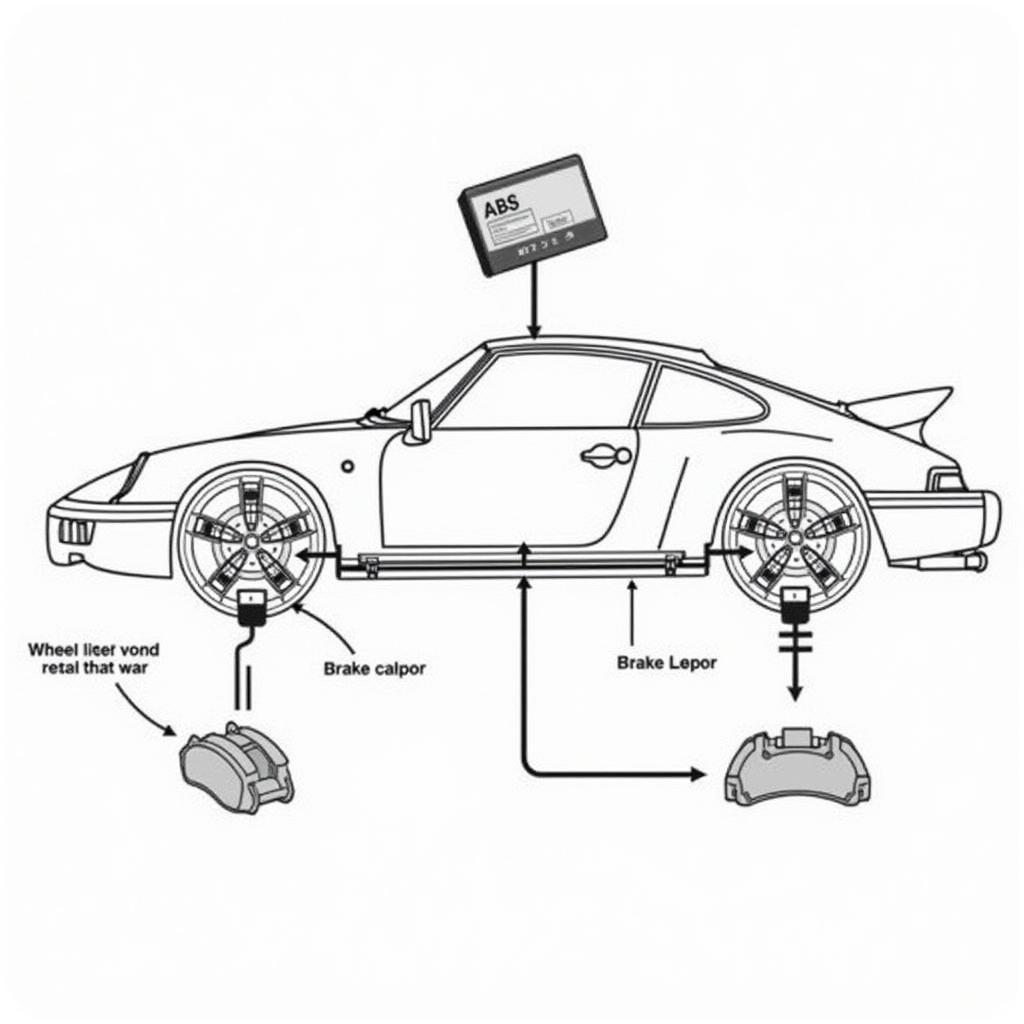Seeing a warning light illuminate on your Seat Leon’s dashboard can be a nerve-wracking experience. It’s crucial to understand what these warning lights signify and how to address them promptly. This comprehensive guide will delve into the common warning lights found in Seat Leon models, providing insights into their meanings and potential solutions.
Understanding Your Seat Leon’s Warning Light System
The warning light system in your Seat Leon is your car’s way of communicating potential issues. These lights are linked to sensors throughout your vehicle that constantly monitor its various systems, from engine performance to safety features. When a sensor detects an irregularity, it triggers the corresponding warning light on your dashboard.
Decoding the Warning Lights
Seat Leon warning lights use a standardized system of symbols and colors to convey the urgency of the situation.
Color Coding and Their Meanings:
- Red: Indicates a serious problem requiring immediate attention. Continuing to drive could lead to severe damage or compromise safety.
- Yellow/Orange: Signals a potential issue that needs addressing. While you might not need to stop immediately, it’s crucial to get it checked soon.
- Green/Blue: These lights usually indicate that a system is active and functioning correctly.
Common Seat Leon Warning Lights and What They Mean:
- Engine Malfunction Light (Yellow/Orange): This light can indicate a range of issues, from minor sensor problems to more severe engine malfunctions.
- Electronic Power Control (EPC) Light (Yellow/Orange): This light typically illuminates with the Engine Malfunction light and can point to problems with the throttle body, cruise control, or electronic throttle control.
- Anti-lock Braking System (ABS) Light (Yellow/Orange): This indicates an issue with your ABS, potentially affecting braking efficiency, especially on slippery surfaces.
- Airbag Warning Light (Red): A serious warning that there may be a fault in the airbag system.
- Tire Pressure Monitoring System (TPMS) Light (Yellow/Orange): Signals a potential issue with tire pressure, which can affect handling and fuel efficiency.
- Battery Warning Light (Red): This light suggests a problem with the charging system, potentially a failing alternator or a loose battery connection.
“Understanding the difference between a red and a yellow warning light can be crucial. While yellow often signals a problem you can address later, ignoring a red light can lead to significant damage and safety risks,” says Mark Stevenson, a seasoned automotive electrician with over 20 years of experience.
What to Do When a Warning Light Turns On
- Consult Your Owner’s Manual: Your Seat Leon’s owner’s manual provides a detailed explanation of each warning light and recommended actions.
- Assess the Situation: Consider the color of the light and any noticeable changes in your vehicle’s performance.
- Take Immediate Action (Red Lights): If a red warning light appears, safely pull over as soon as possible and contact roadside assistance or a qualified mechanic.
- Schedule an Inspection (Yellow/Orange Lights): For yellow or orange lights, schedule an appointment with a trusted mechanic to diagnose and address the issue.
The Role of Remote Diagnostics
In today’s technologically advanced world, remote diagnostics have revolutionized car repair and maintenance. With specialized software, technicians can access your Seat Leon’s onboard computer remotely, read error codes, and often diagnose the problem without needing your physical presence.
Benefits of Remote Diagnostics:
- Faster Diagnosis: Eliminates the need for physical visits for initial diagnosis.
- Cost-Effective: Can save on potential towing costs and multiple trips to the mechanic.
- Convenient: Allows for diagnosis and software updates from the comfort of your home or office.
Preventative Maintenance and Your Seat Leon
Regular maintenance plays a crucial role in preventing warning lights from appearing in the first place.
- Adhere to Service Schedules: Follow the manufacturer’s recommended service intervals for oil changes, fluid top-ups, and filter replacements.
- Visual Inspections: Regularly check your tire pressure, fluid levels, and look for any visible signs of wear and tear.
- Address Issues Promptly: Don’t ignore minor issues as they can escalate into more significant problems over time.
Conclusion
Understanding your Seat Leon’s warning lights empowers you to address potential issues promptly and keep your vehicle running smoothly. By familiarizing yourself with the different lights, their meanings, and utilizing resources like remote diagnostics, you can ensure safe and enjoyable driving experiences for miles to come. Don’t let a warning light cause unnecessary worry; stay informed, stay safe, and enjoy the ride!
FAQs about Seat Leon Warning Lights:
- Can I reset a warning light myself? While you might be able to reset some warning lights, it’s not recommended unless you fully understand the underlying cause. Resetting without addressing the issue can lead to further damage and safety risks. Consider exploring resources like our guide on reset warning lights Seat Leon for more detailed information.
- What does an exclamation mark warning light in my Seat Leon mean? An exclamation mark within a triangle usually indicates a general warning and can signify various issues, from low tire pressure to a faulty brake light. Refer to your Seat Leon warning lights explained guide or consult your owner’s manual for a specific diagnosis.
- Why is my engine malfunction light on, but my car seems to be running fine? Sometimes, the engine malfunction light can be triggered by a minor sensor malfunction or a temporary glitch. However, it’s always best to have it checked, as it could also signal a developing problem.
- How often should I check my tire pressure? It’s good practice to check your tire pressure at least once a month and before long journeys.
- Can extreme temperatures affect my car battery’s performance? Yes, both extreme heat and cold can impact battery life and performance. Ensure your battery is regularly checked, especially during extreme weather conditions.

